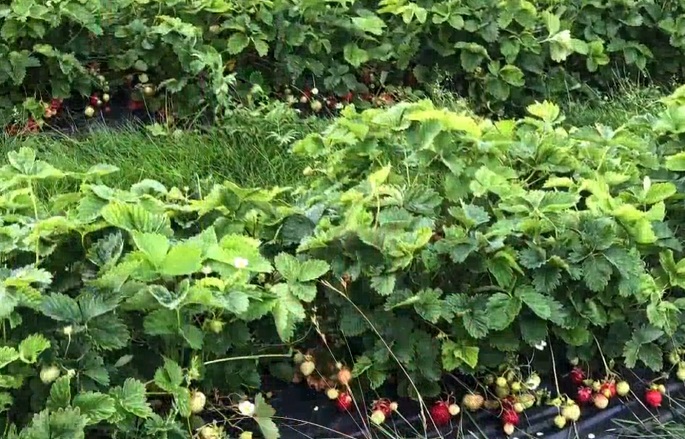Heat, drought hamper harvest of horticultural crops last year
Published : 01 Mar 2024, 01:40
Updated : 01 Mar 2024, 01:43
Finland produced a total of 282 million kilograms of vegetables, berries and fruits In 2023, which was 25 million kilograms less than in the previous year, said Natural Resources Institute Finland (Luke) in a press release on Thursday.
The total area of horticultural production was more than 18,000 hectares, of which greenhouses accounted for 345 hectares.
The number of horticultural enterprises decreased to 2,880. The cultivated area per enterprise exceeded seven hectares for the first time. The decrease in the number of enterprises did not have any significant impact on the total area of horticultural production.
The growing season in 2023 was warmer than usual. Excessive heat and drought caused harm especially in the clay soils of Southern Finland.
The hot and dry growing conditions were reflected in the strawberry and garden pea harvests, for example.
The availability of workforce and the simultaneous maturing of the harvest also caused problems for strawberry farmers. The rains in the late summer created challenges for harvesting root vegetables.
Challenges resulting from heat waves are difficult to combat, even through irrigation. The timing of harvest can be influenced better in tunnel production than in open-field production. Berry cultivation has therefore increasingly moved to tunnel production.
“In 2023, the total tunnel area increased to 115 hectares. The yields per hectare in tunnel production were around 30,000 kilograms for strawberry and raspberry, while in open-field production, the yields per hectare are at 4,000–5,000 kilograms. Tunnel production is particularly significant for raspberry,” said Anna-Kaisa Jaakkonen, senior statistician of Luke.
The most important revision to the statistics in 2023 was dividing garden pea into two different forms of use: industrial contract pea and fresh production. Industrial contract pea mainly consists of frozen and tinned peas, while fresh production involves peas sold with their pods. Of last year’s total harvest of 7.8 million kilograms, 4.6 million kilograms were frozen peas.
Garden pea is the most important horticultural crop in terms of area. In the 1980s, it was cultivated in a total area of 1,500 hectares. In 2020, its cultivated area peaked at 5,500 hectares. Last year, the cultivated area for garden pea was below 4,000 hectares. The area for organic garden pea also decreased significantly. The renewal of the subsidy system for garden pea contributed to this development.
“Frozen peas are the bright spot in horticultural product exports. Pea exports were at their highest in 2018, with roughly 2.8 million kilograms. The figures also look promising for 2023: According to the preliminary statics from the Finnish Customs, the exports for pea from January to November amounted to four million kilograms. The most important export country is Italy,” said Jaakkonen from the Customs statistics.
Apple is the most commonly grown fruit in Finland. The production of apples was 7.8 million kilograms. Pear was included in the statistics as a separate product for the first time last year. Pear can be considered to have established itself as part of the horticultural production in Åland, even though it is at the limits of its occurrence there.
The area for pear is approximately 30 hectares, and 151,000 kilograms were harvested in 2023. At its best, the level of the pear harvest may reach 20,000–30,000 kilograms per hectare, even though last year’s level was approximately half of this.
Production of greenhouse vegetables has recovered from the fall in 2022 to some extent. At that time, high energy prices, especially the price of electricity, reduced production. In 2023, 88 million kilograms of greenhouse vegetables were produced, which was more than a million kilograms less than in the previous year.
The greenhouse cucumber harvest was more than 50 million kilograms. More than 60 per cent of the area was cultivated for at least 10 months. Tomato production totalled 31 million kilograms.
Of this amount, special tomato varieties accounted for six million kilograms. A total of 91 million pots of potted vegetables were produced.


